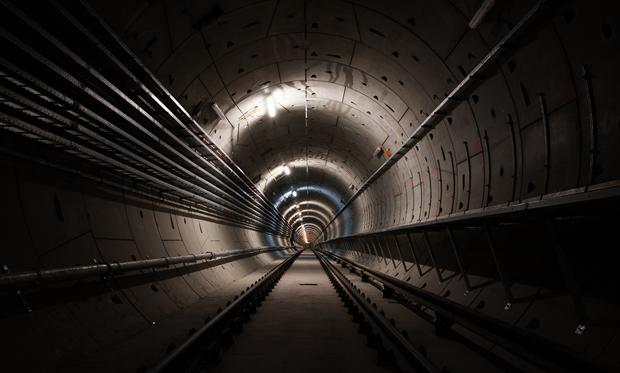Cable tunnel
Introduction
With the development of society, the use of electricity is indispensable for our lives, and cable tunnels are inextricably linked with electricity. A cable tunnel refers to a tunnel used to lay cables.
There are many advantages of a cable tunnel. The most obvious one is that it is a one-time investment and construction. There are many cable supports in the tunnel. After the tunnel is completed, you only need to check it on time. The department put forward a new plan i
In order to ensure the absolute safety of the tunnel, it also made many detailed requirements for the tunnel. The cable tunnel is designed with lighting facilities. When the lighting voltage exceeds 36 volts, it will have an impact on the safety of the tunnel, thereby affecting the safety of the cable. Therefore, the "Civil Building Electrical Design Code" clearly stipulates that the lighting facilities in the cable tunnel The voltage cannot exceed 36 volts. If it exceeds, certain safety measures must be taken. In addition to lighting requirements, there are also certain requirements for the drainage system in the tunnel. For example, the longitudinal drainage gradient of the cable tunnel should not be less than 0.5%, and the bottom of the tunnel should be designed with drainage ditches, and the tunnel should be mechanically drained when necessary. In terms of tunnel safety protection, it is very necessary to set up safety holes in the tunnel. .
Classification
There are various forms and categories of cable tunnels. Different tunnel forms have different operating characteristics and different importance.
(1) Classified by purpose
①Special tunnel: It is a tunnel for laying special power cables.
②Common ditch: also known as comprehensive pipe ditch, it is a comprehensive corridor for underground urban pipelines. It is a tunnel set underground for various public utilities to place various pipelines.
③Combined tunnel: refers to a tunnel used by power cables and municipal transportation facilities such as roads and railways.
(2) Classified by voltage level
①High voltage tunnel: refers to the cable voltage level in the cable tunnel is 110kV and above.
②Low-voltage tunnel: refers to the cable voltage level in the cable tunnel is below 110kV.
③High and low voltage mixed tunnel: refers to the cable voltage level in the cable tunnel without strict regulations.
(3) Classified by access method
The access method of cable tunnel refers to the form of power line access on both sides of the tunnel. It mainly includes three forms:

① Both ends are substations.
②One end is a substation, and the other end is an overhead line connection.
③ Both ends are connected by overhead lines.
Features
1. Architectural features
Due to the special use function, cable tunnels generally have narrow and long spaces, few entrances and exits, and fire-proof blocking and obstacles are implemented in the tunnels. Lots of things.
①The space is long and narrow, with few entrances and exits. A cable tunnel is a closed, narrow and long structure, generally made of bricks, stones and other non-combustible materials. The space is narrow and long, usually about 1.8m high and 1.5m wide. Some places with less cable replacement also have insufficient width and height. 1m cable tunnel. For the convenience of construction, overhaul, and inspections, there are generally pedestrian access roads in the tunnel, and an overhaul entrance is set tens of meters apart to communicate with the ground.
②There are many obstructions and blockages along the way. There are several layers of cable supports on both sides of the tunnel to place more cables. When laying cables, the tunnel is also equipped with fire-resistant partitions for fire separation between cable layers and for blocking cable holes, fire-resistant nets to prevent flame penetration and spread, firewalls set up in relevant parts of important circuits, and vertical shafts. Fire barriers, such as fire barriers, will hinder firefighting operations to varying degrees when a fire occurs.
Second, use characteristics
There are no other combustibles in the cable tunnel, and fires are generally caused by the burning of cables. The insulation of the cable is made of combustible materials, improper use and maintenance may cause fire.
3. Characteristics of fire-fighting facilities
Cable tunnels are generally equipped with mobile fire extinguishers and fixed fire extinguishing systems.
①There are a certain number of fire extinguishers in the cable tunnel according to the medium fire hazard level, mainly ABC dry powder fire extinguishers.
②Fixed fire extinguishing systems installed in cable tunnels usually include carbon dioxide gas fire extinguishing systems, gas melt adhesive (smoke) fire extinguishing systems and water spray fire extinguishing systems.
③Some larger cable tunnels are equipped with smoke prevention and exhaust facilities.
Acceptance content
(1) Lighting. The cable tunnel should introduce low-voltage lighting power from both ends, and arrange lamps and lanterns at intervals, and set up two-way control switches. Lamps should be moisture-proof and explosion-proof.
(2) Ventilation. Tunnel ventilation has two methods: natural ventilation and forced exhaust. For cable tunnels on urban roads, air inlet and outlet shafts can be constructed in the green areas where conditions permit, and the air pressure formed by the height difference between the inlet and outlet shafts can be used to make air circulate naturally. Forced air exhaust requires the installation of a blower, and ventilation calculations are carried out according to the tunnel volume and ventilation requirements to determine the power of the blower and the time for automatic startup and shutdown.
(3) Drain water. The entire tunnel should have drainage channels and automatic drainage devices. If there is water in the tunnel, it will be concentrated in the water collection pits at both ends. When a certain water level is reached, the automatic drainage device will be activated, and the water will be discharged to the urban sewer with a drainage pump.
(4) Fire fighting measures. In order to ensure the safety of cables, reliable fire fighting measures must be provided in the cable tunnel. Cables with fiber-wrapped outer layers should not be used in tunnels. Cables with flame-retardant properties and non-external flame outer sheaths should be used. Fire-resistant coatings or fire-resistant tapes should be applied to the outer protective layer of non-solar-combustible cables. High-voltage cables should be covered with fire-resistant trough boxes made of durable fire-resistant materials. If it is a single-core cable, it can be arranged in a zigzag shape, and the three-phase cover is in a set of fire-proof troughs, and both ends of the fire-proof trough are blocked with refractory materials. Fire alarm and automatic fire extinguishing devices should also be installed in the tunnel.
Latest: STM (Australian Digital Bag Brand)
Next: signal cable







